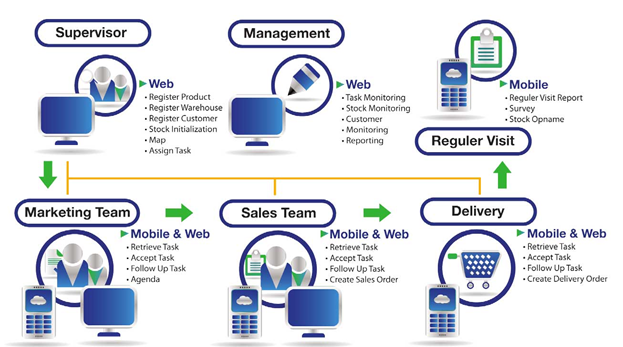Contemporary business environment imposes new challenges to the salespeople: they have to juggle many responsibilities, which more often than not, results in mistakes. These mistakes are absolutely detrimental to an organization of any kind as it creates customer dissatisfaction and can ultimately lead to losses – be those financial, reputational or others.

Sales Force Automation options
This is where specialized piece of software called Sales Force Automation (SFA) comes in. It is designed exclusively to assist organizations in management of all of their sales functions, ranging from forecasting to customer profiling and so on. There are five essential aspects that SFA software is expected to handle:
Sales Forecasting
One of the first things that a Sales Force Automation is expected to provide is sales forecasting. In order to function more effectively, salespeople should base their decisions on quality data. In sales, this type of data takes form of current sales trends, as well as customer’s past demands. Having such information at their immediate disposal allows salespeople to allocate resources more effectively and improve their decision-making in terms of sales planning and other related activities.
Synchronized workflow
Another essential feature of SFA is its provision of a unified database. The database should provide salespeople with the ability to input, store, and retrieve valuable information in a quick and understandable manner. On top of that, outstanding SFA software should provide seamless integration with Microsoft Excel and Exchange, so that data can be imported and exported without delays.
Customization options
Sophistication of modern sales processes enforces greater flexibility from B2B organizations. It is the type of flexibility that cannot be achieved with one-fit-all software solution. Therefore, SFA software should be delivered with the opportunity for its users to tailor it in accordance with their own needs. Bpm’online, for instance, is an example of a powerful sales automation solution that B2B businesses praise for its intuitive interface and extensive API that enables any kind of customization. Ultimately, customizable software allows these salespeople to be more productive at their everyday work.
Lead management
Salespeople aren’t supposed to work in isolation from their leads. In fact, co-operative approach is imperative, given the demands of our time. SFA software should handle lead management by creating exhaustive customer profiles, which are then to be used by salespeople to find the right approach to convert their leads into customers, and later into clients.
Accessibility
Dependability of salespeople on internet and various digital devices, such as laptops, tablets, and smartphones, dictates that sales force automation software should be equally accessible via any of these means. Currently, the method that addresses the issue of accessibility the best is cloud services: these make sure that the SFA software functions equally good on all devices. This is done by installing software on the server and providing users with the interface accessible through internet. Moving the software to the cloud comes with a number of side benefits, such as security and mobility, which, in turn, will improve organization’s selling function.
Sales Force Automation is an essential tool that lets salespeople make informed decisions backed by a plethora of analytical filters; it introduces systematic efficiency into their working lives. It can be thought of as a handbook, constantly revised and updated one, which employees can refer to everyday. At the end of the day, it undoubtedly yields better employee productivity and increased sales.
See also:

